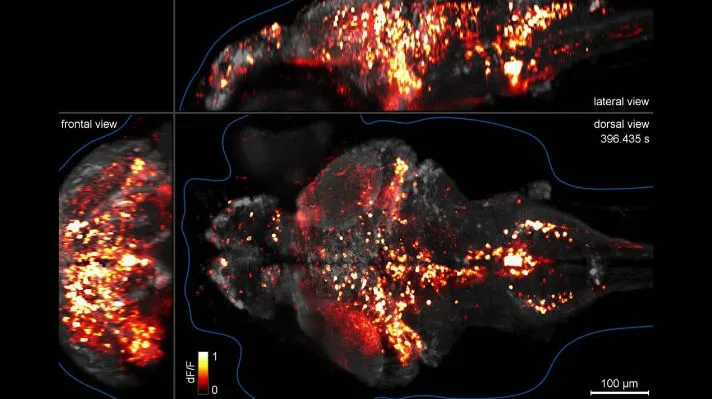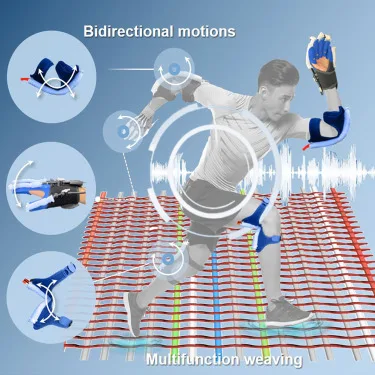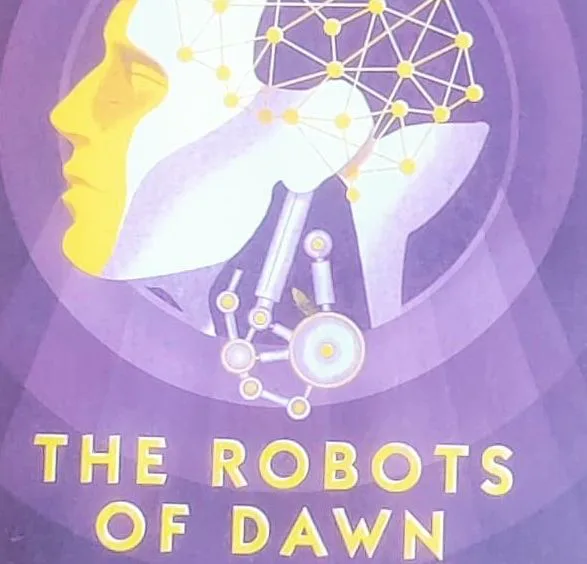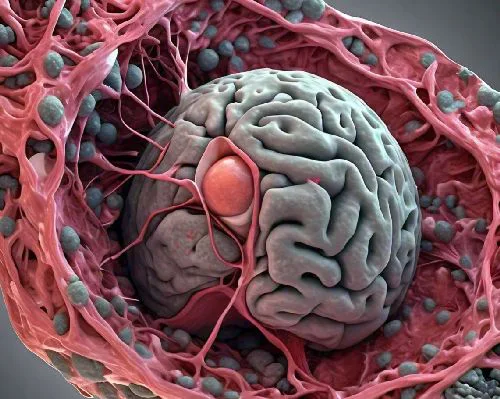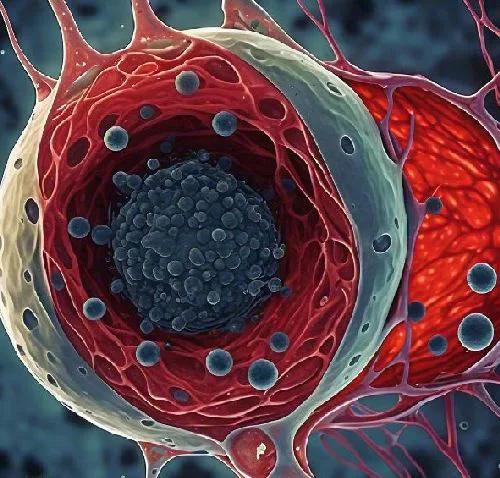Gödel, Escher, Bach: an Eternal Golden Braid by Douglas Hofstadter was first published in 1979. Famously known as GEB, the book touches upon everything – consciousness, self-reference, computer science, formal systems, proofs, mathematics, abstract structures, codes, language, music, storytelling, conversations etc. At the beginning, I’d like to mention that I’m not qualified to review this book, as I lack a background in mathematics. Despite my difficulty in understanding complex concepts, from what little I’ve grasped, I believe this is one of the most profound works I’ve encountered so far.
Read MoreAuthor: Pooja Kashyap
Psychedelics Stimulate Hippocampal Cells to Alleviate Anxiety
When I first read “DMT: The Spirit Molecule” by Dr. Rick Strassman, I thought developing psychedelic inspired drugs without any “hallucinating” side-effects to cure anxiety related problems could be a game changer. Interestingly, I came across research by Cornell University, where researchers did come up with psychedelics to excite cells in hippocampus to reduce anxiety.
Read MoreWHaloCaMP Biosensor: Real-Time Insights into Animal Physiology
Researchers at the Janelia group created an innovative way for engineered protein biosensors & bright, fluorescent Janelia Fluor (JF) dyes to work together. Aim of the new biosensor is to measure physiological signals in live animals. The revolutionary sensor, WHaloCaMP, can track multiple physiological signals in live animals, unlike its previous version. And when it comes to illumination, the detector can emit bright far-red light. This light can penetrate deeper into tissues than the other (existing) wavelengths.
Read MoreCloud Messaging Platforms: Market Growth, Tech Trends and Leading Players
The trajectory of cloud-based messaging platforms is on an upward trend. As industries globally adopt advanced technologies, the demand for sophisticated applications is also increasing. As per Market Research Future, the Cloud Communication Platform market industry is projected to grow from USD 19.38 Billion in 2024 to USD 82.21 Billion by 2032, exhibiting a compound annual growth rate (CAGR) of 19.80% during the forecast period (2024 – 2032). While Mordor Intelligence estimates it to reach USD 40.13 billion by 2029, growing at a CAGR of 18.44% during the forecast period…
Read MoreInterview: Dr. Sukriti Hans, Material Scientist at LIST, Luxembourg
In a rapidly evolving world where technological advancements meet the growing demand for sustainability, Dr. Sukriti Hans stands at the forefront of materials research. Currently a Junior R&T Associate at the Luxembourg Institute of Science and Technology (LIST), Dr. Hans is playing a pivotal role in developing high-resolution characterization methods that can redefine the future of materials science.
Read MoreBook Review: Dark Matter by Blake Crouch
Dark Matter explores the many-worlds theory and navigates parallel dimensions. Written by Blake Crouch in 2016, it’s an engaging book that one can quickly get lost in. I finished reading it in just two days while traveling.
Read MoreInterview: Dr. Yaqing Shen, Material Scientist at KAUST, Saudi Arabia
I’m excited to introduce Dr. Yaqing Shen, a highly accomplished scientist in the field of Material Science and Engineering. Her groundbreaking research on advancing the use of two-dimensional (2D) semiconductors in commercial field-effect transistors (FETs) caught my attention. Despite her hectic academic responsibilities, Dr. Shen graciously agreed to an email interview, where she shared insights into her work and career.
Read MoreHigh-Performance 2D Semiconductor Transistor Fabrication: h-BN Dielectrics and Metal Gate Tech
Two-dimensional (2D) semiconductors hold enormous potential to transform the future of electronics. However, their full potential is hindered by a major challenge: interface defects that form between the semiconductors and insulating layers, which degrade overall performance.
Read MoreInterview: Dr. Fengxin Sun, Fiber Scientist at Jiangnan University, China
I’m excited to introduce Dr. Fengxin Sun, an Associate Professor at the Key Laboratory of Eco-Textile, Ministry of Education, Jiangnan University in Wuxi, China. Dr. Sun completed his Ph.D. in textile materials at Donghua University in Shanghai in 2017 and spent time as a joint Ph.D. student at the Institute for Frontier Materials, Deakin University in Australia. His research covers a fascinating range of topics, from textile material evaluation and functional textile development to mechanical modeling and simulation of soft materials.
Read MoreYarn-Based Weaving for Soft Robotics: Revolutionizing Healthcare
Globally, electronics engineers are busy developing devices that are flexible, adaptable, and built for high performance. These devices are designed for real-world applications, including – robotics, healthcare and wearable technology. Similar efforts are underway in developing smart textiles as well. Interestingly, these fabrics can detect environmental changes or perform specific functions.
Read MoreBook Review: The Robots of Dawn by Issac Asimov
“The Robots of Dawn”, published in 1983, is the third novel in Asimov’s Robots series, following “The Caves of Steel” (1954) and “The Naked Sun” (1957). Isaac Asimov is one of my favorite science fiction writers. Even after nearly four decades, his work remains incredibly relevant today. His plots are fast paced and characters feel so lifelike, even the robots, which are portrayed with such depth and realism. With positronic robots in the mix, he crafts stories that explore the loopholes in the Three Laws of Robotics, which he himself…
Read MoreNew Pathway Discovery: Could Block Glioblastoma Spread
An international team of researchers from the academia of Canada and the U.S., has uncovered a new way that cancer cells use to invade the brain. Interestingly, the research team led by the Singh Lab at McMaster University has also found a new therapy that looks promising for blocking and killing these tumors.
Read MoreBook Review: A Hundred Years of Solitude by Gabriel Garcia Marquez
I have love-hate kinda relationship with “A Hundred Years of Solitude”. The book was written by Nobel laureate Gabriel Garcia Marquez in 1967. It felt like I had been “reading” this manuscript for a “100 years”. Before picking up this book, I had just finished “Pedro Páramo” by Juan Rulfo, which captivated me with its brevity and intensity. These two books are often compared for their exploration of similar themes such as memory, history, and the supernatural, in a mix of magical realism. Although “A Hundred Years of Solitude” weaves…
Read MoreInterview: Dr. Eunhye Baek, Research Scientist at Tsinghua University, China
I’m excited to introduce our latest interviewee, Dr. Eunhye Baek, whose impressive academic journey and cutting-edge research make her a standout in the field of electrical engineering and nanotechnology. Dr. Baek studied Electrical Engineering at Pohang University of Science and Technology (POSTECH) from 2007 to 2010. In January 2011, she joined Professor Yoon-Ha Jeong’s group at POSTECH, where she focused on the biological functionalization of silicon nanowire BioFETs to detect biomolecules with high sensitivity.
Read MoreCAMs: Key Players in Modulating Post-Stroke Immune Responses
When a blood clot blocks an artery, it leads to an ischemic stroke. The blockage or ischemic stroke prevents blood and oxygen from reaching areas of the brain. This gives rise to one of the following symptoms: According to the statistics, the older one gets, the higher the risk of experiencing ischemic strokes. Although, neuroscience has helped us understand what happens in the body during a stroke. However, we have no idea how the immune system helps with recovery after a stroke.
Read More


